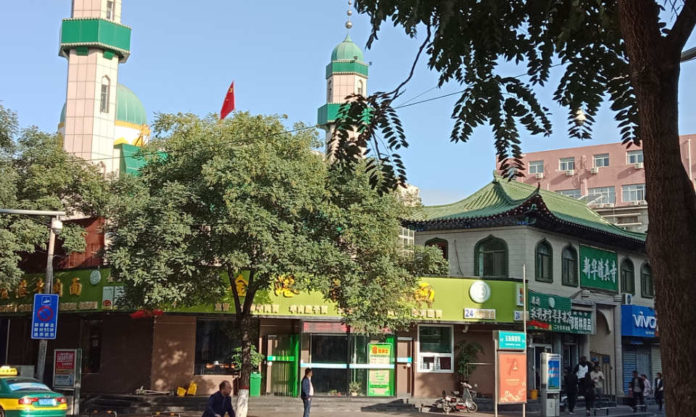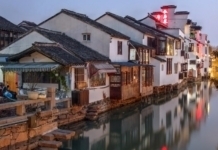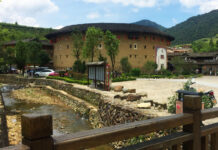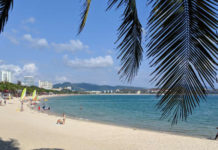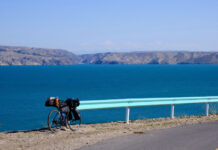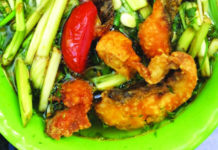Perhaps the most striking thing about Yinchuan is the sense of negative space; the lack of things which are a common sight in other provincial capitals (such as Nanjing). The centre of town does not feature a McDonald’s, the supermarkets are small and stock far less international goods or big brands.
Most noticeable to westerners will be the lack of confectionary, such as chocolate.
But here’s the kicker. There’s also a definite sense of loss, of faded splendour. Nowhere is this felt more clearly than at the site of the Western Xia tombs (西夏 王陵) where a once splendid kingdom was destroyed by the might of one Genghis Khan.
Vast honeycomb-like structures stand like lone centenaries in the desert landscape, set against the dramatic backdrop of the Helan (贺兰) mountains, which separate Ningxia from neighboring Inner Mongolia. For such a historically significant site, there’s not much information in English, but using the “translate” function on WeChat or another app gives visitors a rough idea of what they’re seeing.
Despite the fact that Golden Week is one of the most popular times of year for travel, I saw few other foreigners in Yinchuan, and in general most locals will presume that you are either American or Russian. Unlike some of the bigger cities, Yinchuan is a place where it really pays to be able to speak conversational Chinese, or at least have access to a couple of good instant translation apps.
In many ways, Yinchuan is the stereotypical “other”; the opposite of China’s well-developed and comparatively cosmopolitan east coast. The architecture in places resembles the Middle East much more than the traditional Han style buildings, and there are several striking mosques as well as the usual collection of pagodas and temples. Evocative of the city’s past as a Silk Road trading depot, cheap dried fruit and nuts can be purchased in small, family-run shops.
The cost of food and public transport alone should be a major draw for tourists to visit, a bowl of noodles (with the most common variety being Lanzhoumian/ 兰州面) will set you back less than ¥10, whilst a bus across the city to visit the sites of the old town (xingqing; 兴庆) costs only ¥1-2 per journey!
Spending a couple of days in Yinchuan is one of the best ways to authentically experience the culture of the Hui minority (回民族). Fresh flatbreads are baked on street corners, shops stock modest clothing, and most restaurants have elegantly arranged mutton as their specialty. Other unique products from the province include wolfberry (枸杞) snacks and medicinal “eight treasures” (八宝茶) tea.
Ningxia in general is much more accessible than most people think, with the flight time from Nanjing to Yinchuan being just two and a half hours, the same duration as a flight to Shenzhen.
There’s a convenient airport bus which takes passengers into the center of the old town, although Yinchuan doesn’t have a metro. Another noticeable difference when compared to travelling in other regions in China is the lack of visible travel agents; most day trips and tours here are arranged through contacts, although several travel blogs also recommend different WeChat accounts for this purpose. This definitely adds to the experience though, as hiring a local guide on the ground offers the chance to find hidden gems and take useful shortcuts through the traffic!
For everything unfamiliar about Yinchuan, there are also the things that it has in common with other Chinese cities. Socialising in the evenings takes place in the square by the drum tower (鼓楼), along with the normal “square dancing” (广场跳舞). Yet Yinchuan offers something that a lot of other Chinese cities don’t: room to breathe.


